Corner furniture in the living room
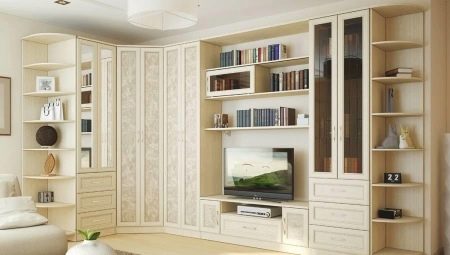
Corner furniture has long been used in European interior designs. In recent years, our compatriots have also developed an interest in non-standard furniture. It is ergonomic, roomy, economically occupies a corner that would simply be empty. The rationality of this approach to interior planning was especially appreciated by the owners of small apartments.
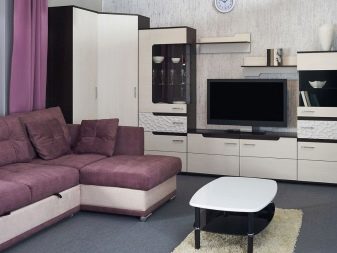
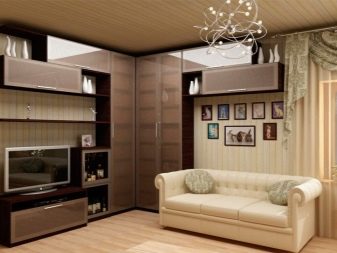
Peculiarities
Corner furniture today is represented by walls, soft sofas and individual products - wardrobes, sideboards, TV stands, showcases, shelves and even triangular aquariums with corner stands. This suggests that an empty corner can be occupied with anything. Properly organized with beautiful and stylish furniture, it can be a decoration of the living room design, delight the hosts and delight guests.
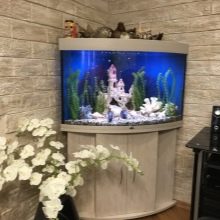
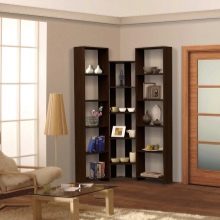
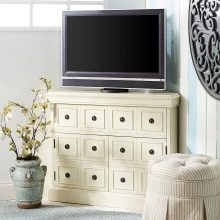
Outwardly, corner furniture seems compact, but its capacity can pleasantly surprise. A wall in one corner collects all the necessary things - dishes for meeting guests, books, clothes, bed linen and many little things. All objects have their places and it is not difficult to extract them, since they are concentrated in one corner.
Besides ergonomics and functionality, corner furniture is endowed with the ability to adjust the space of the room. An elongated room with a curved sofa or curved wall will appear square, and blind corners will appear smoothed.
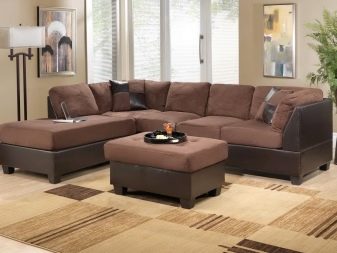
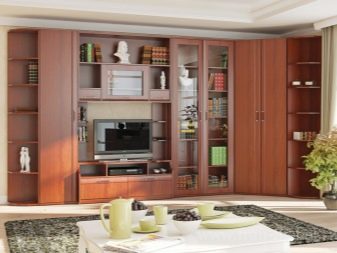
Corner furniture is not only good for small living rooms. It has the ability to create comfort in large and cold rooms by dividing them into two parts on one side of the wall or sofa.
Thus, each zone acquires its own thematic significance (for relaxation or lunch with friends) and becomes a small island of home comfort.
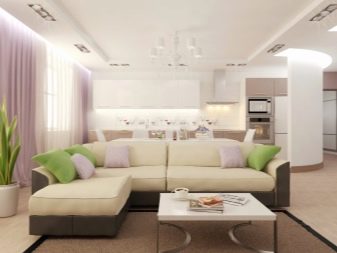
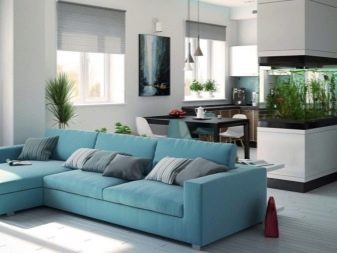
Types and components of furniture
Corner furniture in the hall can be divided into soft (sofas) and hard (walls and individual pieces of furniture). In addition, there is a division into modular, case and built-in options.
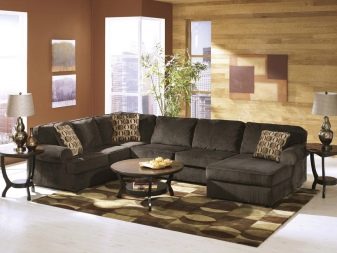
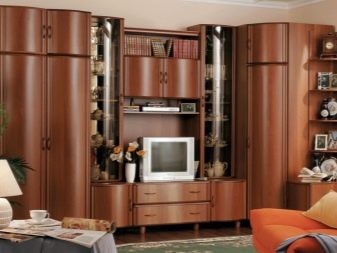
Hull
Cabinet furniture, familiar to everyone, is represented by sections, which can be purchased as a large corner set, or select the necessary elements and make a compact set. During assembly, the sections are fastened together, forming a uniform wall. Any section made in the shape of an angle can be in the center of the furniture assembly - a wardrobe, a showcase, a sideboard, a TV stand. If furniture with a corner wardrobe is chosen, it can replace a small dressing room.

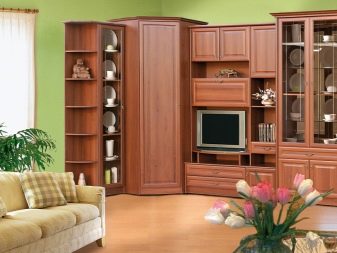
Built-in
Such furniture is installed in small living rooms, where every centimeter matters and is calculated according to an individual project. Similar walls are also used in rooms with complex geometry or a corner niche. Traditionally, built-in furniture has the same depth and height for all cabinets and cabinets, but there are exceptions.
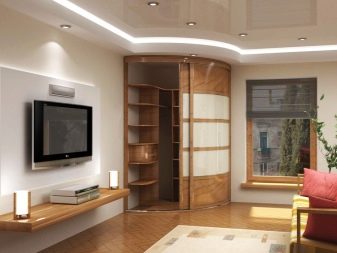
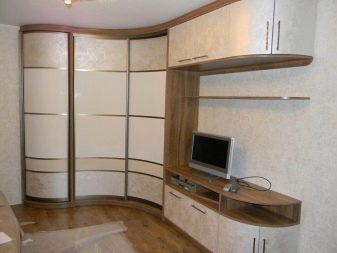
Modular
Recently, modular headsets and sofas are gaining popularity. They consist of different parts (modules) and are capable of completing the final design option at the discretion of the owner. Such furniture is preferred by people hungry for change. They have the opportunity to change the situation at least every day. The modules are equipped with casters or have small finished sections that can change their location.
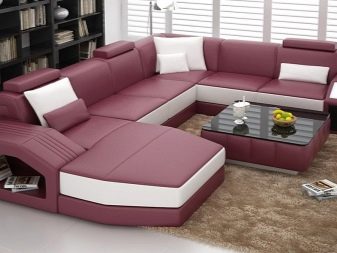
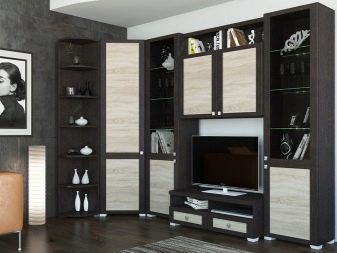
Manufacturing materials
Different types of materials are involved in the production of corner furniture - wood, chipboard, plywood, metal, glass, fabrics, plastic. Glass, metal, mirror surfaces are necessary for the decoration of cabinets and headsets. Textiles are involved in the creation of upholstered furniture. For a deeper understanding of the issue, let us dwell on each material in more detail.
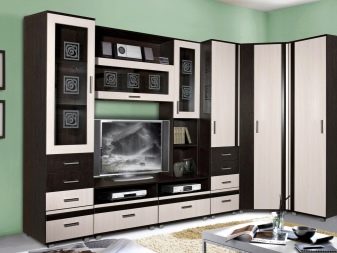
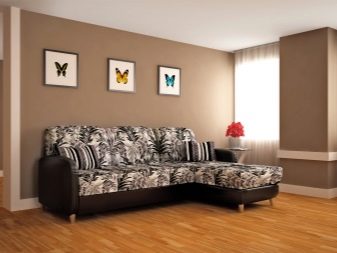
Wood
It is difficult to imagine how humanity would have lived without this material. People have been using wood for the manufacture of furniture since ancient times. The wood is incredibly beautiful, with many shades and patterns that never repeat. When you touch it, you feel pleasant warmth and natural energy.
Wood has a different density, which affects the cost of the material and ultimately the finished product. For example, pine and other conifers are not particularly hard, but they are widely used in the manufacture of furniture, as this reduces the cost of production.
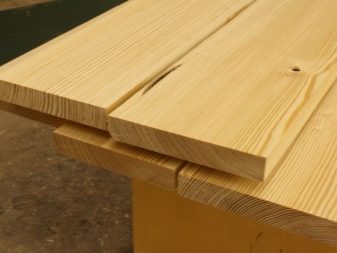
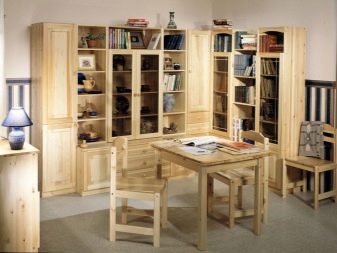
In the production of products experiencing increased stress during operation (wall bars, frames for sofas, armchairs and chairs), hard varieties of trees are used.
Perhaps there is no style that would not fit wood - classic, historical, modern, rustic, ecological, ethnic and other trends need beautiful solid furniture made from natural materials. Wardrobes, sideboards, sideboards, showcases made of wood give the interior a rich and respectable look.

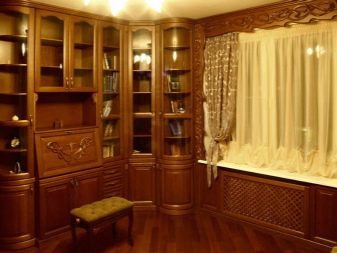
Chipboard, MDF
These are chipboards, bonded with an adhesive. The top layer is made of veneer that imitates the color and pattern of natural wood. The surface of the chipboard can repeat the texture of the most exotic trees, which cannot be found on sale in their natural form. Chipboards are an excellent substitute for natural wood. Their cost is several times cheaper, which makes it possible to provide 80% of the furniture market with accessible materials and bring the finished product to the consumer with any material capabilities.

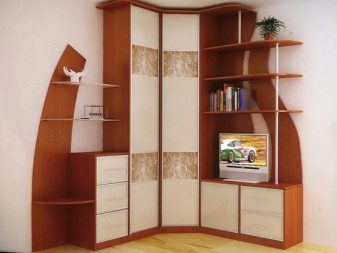
MDF can be used in all interiors where natural wood is required - country, classic, shabby chic.It is impossible to achieve absolute reliability in the design of furniture of these styles, but modern materials will provide a high level of imitation.
If the choice of a corner wall is between products made of MDF or chipboard, it is better to give preference to the first option. MDF is somewhat more expensive, but decorative embossing can be made on it and it does not have toxic impregnations, which are used in chipboard adhesives.
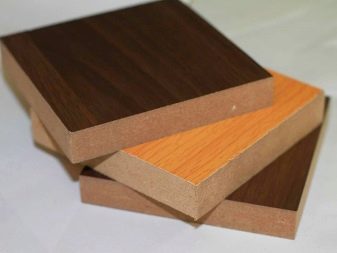
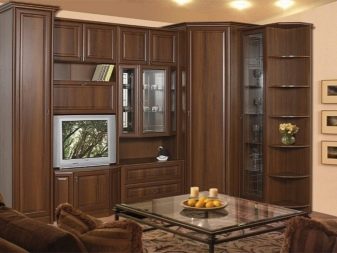
Metal
For the hall, completely metal products are rarely used, only if there are design reasons for such a step. Metal is essential for high-tech, loft, minimalism and other urban modern trends. To create furniture frames or shelving, chrome-plated or painted metal is fragmentarily used. It is pre-treated with anti-corrosion compounds. Such a base can withstand heavy loads and has a long service life.
The frames and legs of small corner pedestals and shelves can be made of copper, brass or bronze to create historical and oriental styles.
In the directions of Provence, Gothic, country they use furniture with elements of artistic forging.
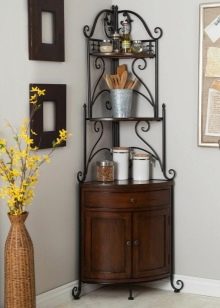
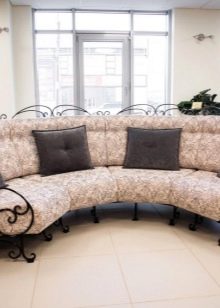
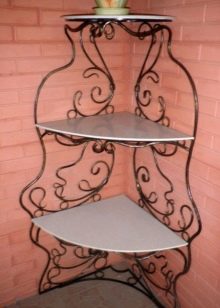
Glass, mirrors
Showcases, walls, slides, cabinets and even shelves rarely do without these materials. Glass neutralizes the impression of being squeezed from cluttering furniture, transmits light, makes the space airy and light. Mirrors play an important role in the visual increase in volume. The larger they are, the more spacious the hall seems.
When deciding on large glass showcases and mirror canvases, you should remember that caring for them is carried out with the use of household chemicals and requires some effort. Glass products are used in fusion, minimalism, hi-tech styles. Mirrored surfaces and stained glass inserts decorate interiors empire style, classicism, rococo, gothic.
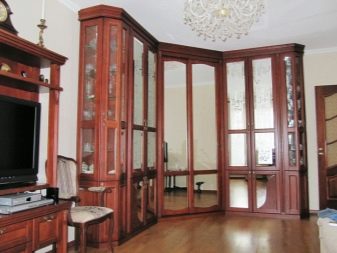

Fabrics
In the production of corner upholstered furniture, a wide range of special fabrics for upholstery are used. They are divided into categories - the higher it is, the more expensive and denser the textiles. Furniture is upholstered with artificial and natural canvases. In terms of tactile sensations, color, density and appearance, you can choose any option, from soft velor to hard matting. Furniture fabrics are impregnated with special compounds, due to which many of them are able to repel moisture and dirt. Spilled juice is simply wiped off with a damp cloth and the stain disappears without a trace.
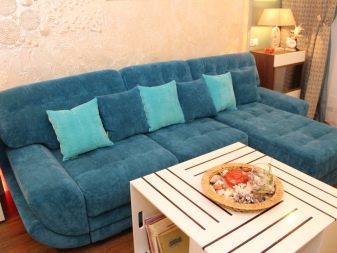

Dimensions (edit)
The dimensions of the corner wall for the living room directly depend on the availability of space. The owners of large rooms have nothing to worry about, they can afford large-sized furniture or confine themselves to a small thematic option, for example, a TV corner with open shelves and a functional cabinet.
For the owners of small rooms, narrow mini-living rooms have been developed with a beautiful modern design and filling. Despite its compactness, miniature furniture has a lot of storage space, but at the same time it does not clutter up the room.
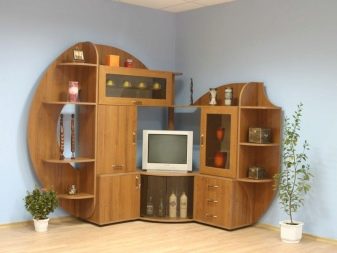
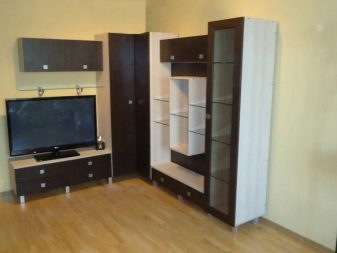
Small living rooms are characterized by wardrobes that rush upward, which increases the usable area for storing things, but having a shallow depth, which makes it possible to save the space of the hall. To facilitate the situation, you should choose open structures.
Combined options will help to increase functionality when the wall has the same amount of open and closed furniture.
As for the corner pedestals, they can only accommodate small TVs with a diagonal of no more than 70 cm, but this design looks quite organic in the living room.

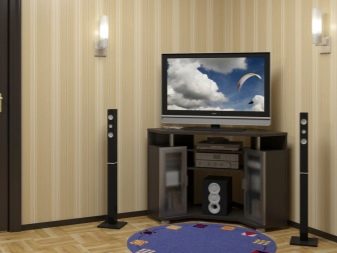
When choosing a sofa, you should take into account the size of the room itself, and also calculate the space it occupies in disassembled form. Large upholstered furniture in a small room looks disastrous. The way out in this situation will be to preserve the number of seats at the expense of the lush backrest and handrails, reducing them to laconic, modest options.There are corner mini-sofas measuring 90X170 cm, which can be successfully expanded, organizing a full-fledged sleeping place.
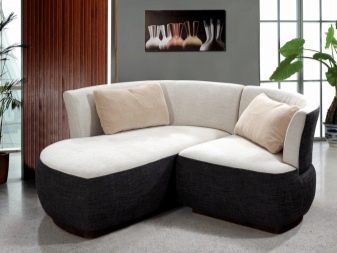
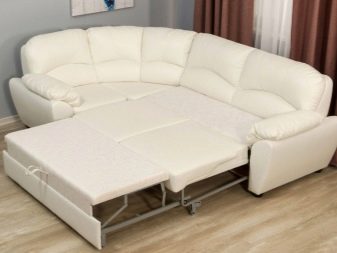
Color and design
Color plays a huge role in the design of the living room, with its help you can correct the geometry of the room, zone it, and maintain the style of the interior. The palette also matters for the corner furniture itself. White color will well refresh a dark corner in the living room and, despite the presence of furniture, will help this part of the room to become visually spacious.
Often, when creating neutral shades in a living room setting, accents are made on a bright sofa. He kind of invites you to rest, but not passive, but positive and cheerful.
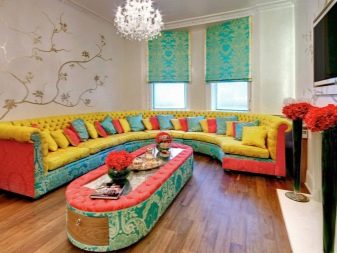
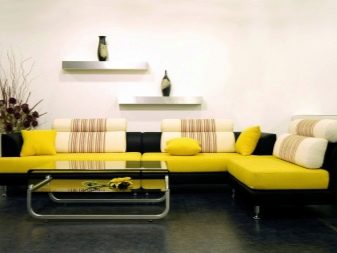
Sometimes, on the contrary, corner furniture is involved in a monochrome design solution, when one main color is chosen, from which arbitrary shades build the entire interior.
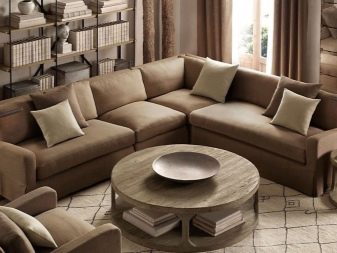

Against the backdrop of bright walls, furniture in a traditional mild brown shade is almost invisible. It brings calm and sedateness to the laconic modern interior.
To create a festive atmosphere with a lot of light and air, choose White color. It matches any colorful tone that the owners decide to introduce into the interior.
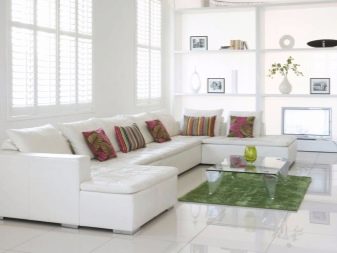
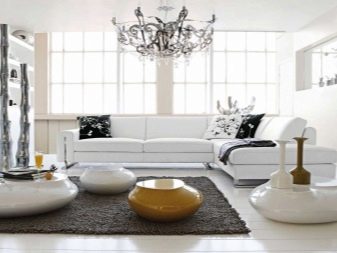
So that the corner walls do not seem boring, it is better for them to consist from several shades.
These can be contrasting options or with a difference of only a few tones.
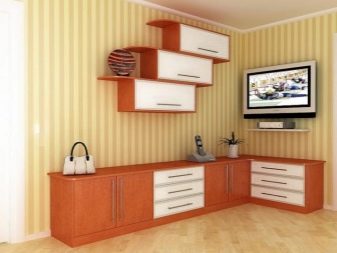
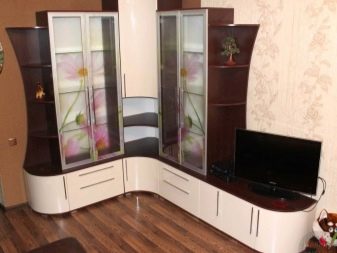
How to choose?
When choosing corner furniture for the living room, the following points must be considered.
- Before making a purchase, you need to decide for yourself - this will be the dominant group or complementary to other functional furniture. For example, if a large room already has a rectilinear wall, then a set is needed to organize an empty corner. Or, in a small room, the corner wall takes over the main function of providing the family with a place to store things.
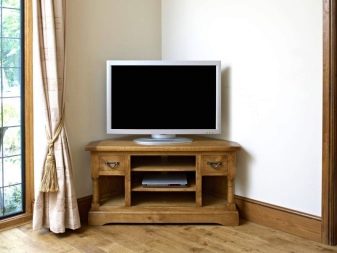
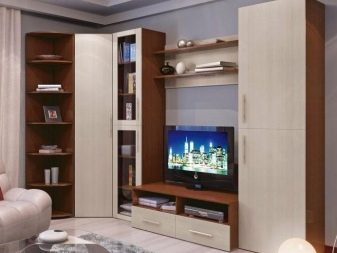
- It is necessary to think over the tasks that the wall will have to solve. Shelves are needed to accommodate books; storage of clothes and bed linen requires a wardrobe and a chest of drawers; sometimes a TV stand is needed or a work area with a computer desk, side tables and open shelves is supposed.
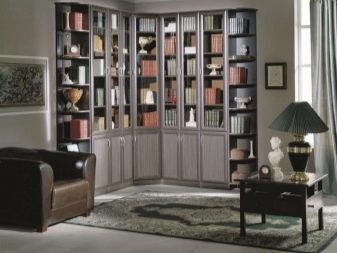
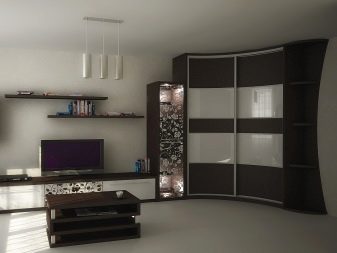
- When the size and purpose of corner furniture is determined, you need to pay attention to the style and color scheme of the interior. For example, a wall made of glass and metal will not fit the cozy warm theme of Provence.
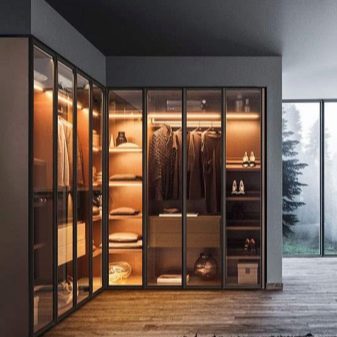
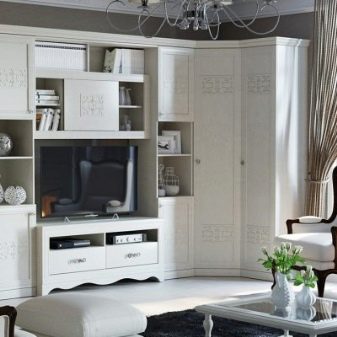
- When choosing furniture, the type of material from which it is made is taken into account. This is important for the formation of a style solution and concretization of their budgetary possibilities. Expensive wood can be replaced with MDF boards, and forged items with painted metal, which will help keep within the budget and make a good imitation of expensive styles.
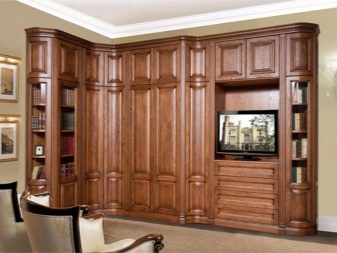

- When buying, you should pay attention to brands, product quality, study the certificate - the durability of the furniture depends on it.
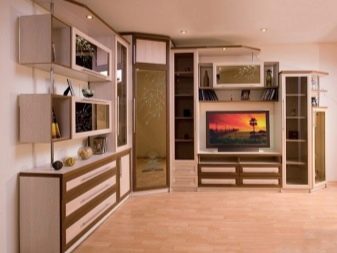
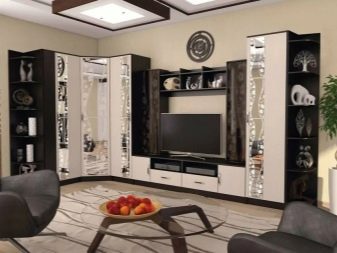
How to place?
Cabinet furniture is not manufactured in one piece, but is assembled in sections. This makes it possible to purchase items that the hostess needs and can enter a specific corner. When the issue with the selection of the wall is resolved, it must be placed either according to the scheme proposed by the manufacturer, or changes should be made based on the capabilities of your room. For example, if the kit includes a computer desk, which is better to be closer to the window, and not in the corner, although this was not provided by the original design.


If the sections are self-installed, they line up on both sides of the center piece of furniture.
This part is set by the manufacturer, has a specific angular shape and cannot be changed.
Mini-walls are placed in small rooms, in which everything is thought out to the smallest detail, so it is better to install them ready-made. For small rooms, you can use not complete furniture, but separate modules necessary for a specific interior - a TV stand, a rack, an aquarium. A small space needs narrow furniture and open shelves.
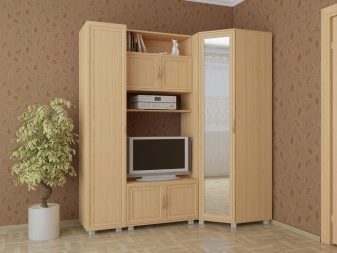
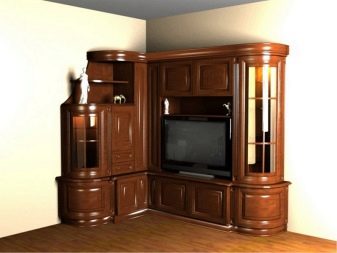
As for corner sofas, they are installed in two ways - they are placed in a corner with a small hall size, or they form a soft zone in the center of a spacious room. Sometimes they purchase two corner or radius sofas, placing them around a stylish coffee table. This setting allows you to gather a large number of guests.
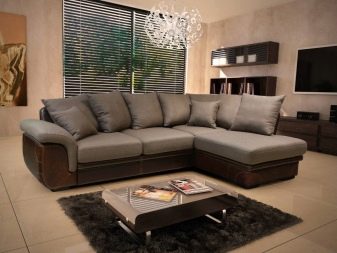
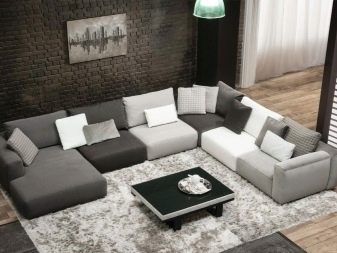
The way the sofa is centrally placed goes well with modern styles that do not clutter the living room with cabinet furniture and decor. In this case, all attention is drawn to the soft zone.
The advantage of corner furniture is in the possibility of zoning a large room. If you turn one side of the wall or sofa to the center of the room, the furniture will divide it in half, and the owners will decide what content to set for each zone.
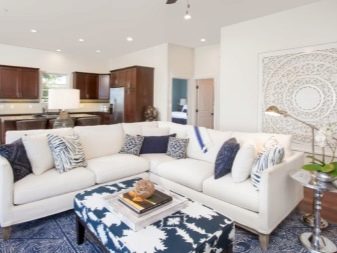
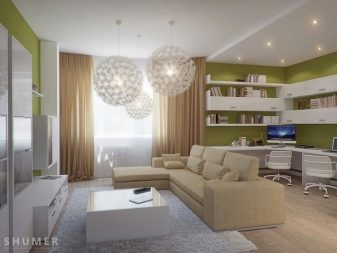
Successful examples
The incredible variety of corner furniture options makes it difficult to choose. Viewing beautiful options for walls, cabinets and sofas will help determine the desires and needs of the owners.
- A large corner mirror cabinet expands the space well, fills it with air and light.
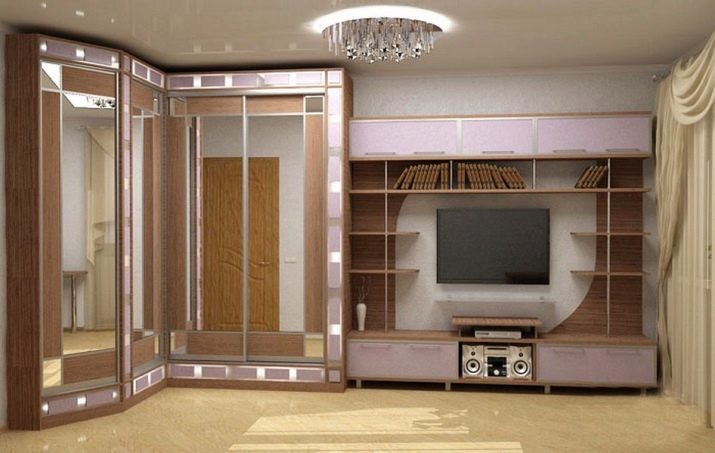
- A streamlined white wall with a TV in the center suits modern interiors with minimal decor.
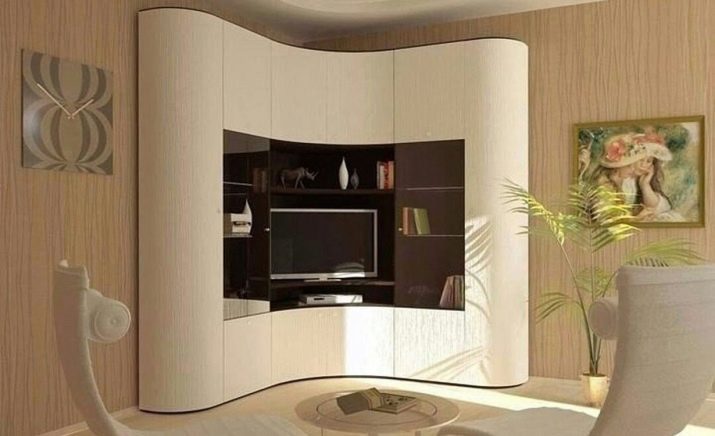
- A corner wall on one side divides the space of a large room into two zones.

- It's rare to find a corner bookcase with a fireplace.
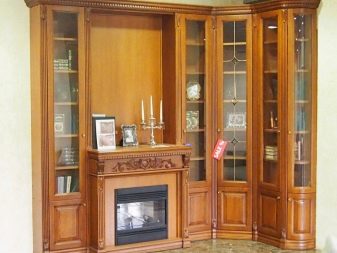
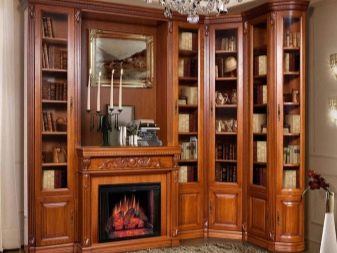
- Large wall with display cases for a classic interior.
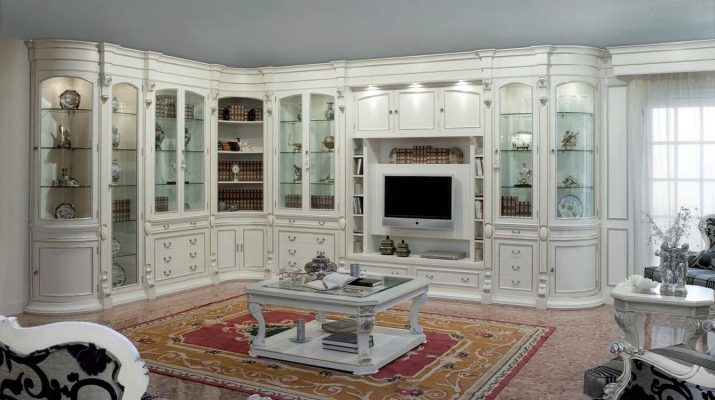
- A beautiful sofa in the center of the room has become a decoration of a stylish noble interior.
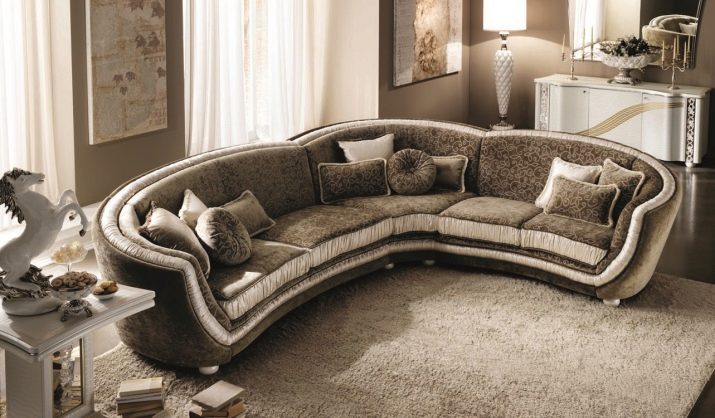
- The use of corner showcases in the design of the living room.
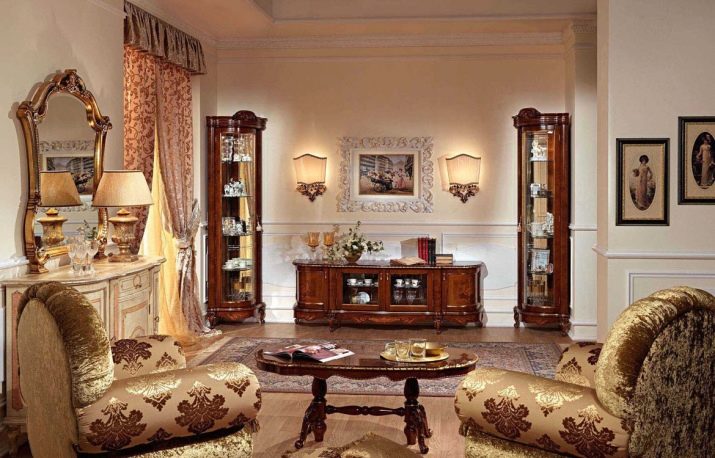
- The large, extravagant red sofa becomes an accent and distinctive decor in a simple, minimalist setting.
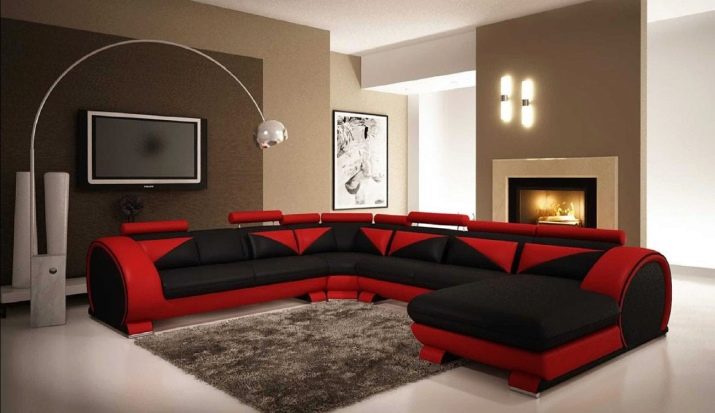
- The corner wardrobe is complemented by one TV stand and open shelves.
The minimal presence of closed furniture makes the wall elegant and lightweight.
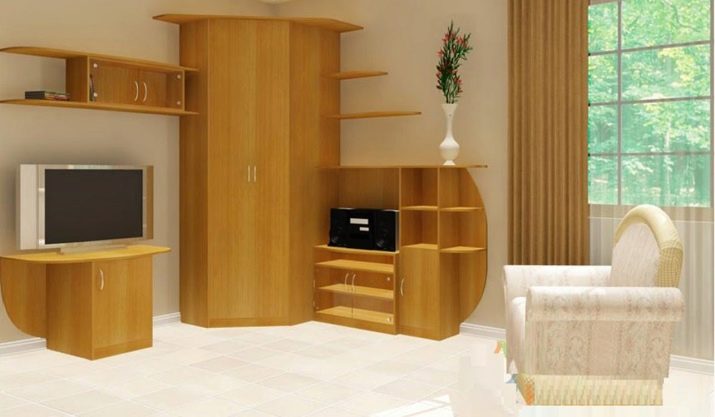
Corner furniture can be classified as non-standard, which means more effective designs. It has good capacity but does not take up much space. It is the perfect choice for living rooms of all sizes.
For an overview of the corner wall in the living room, see the following video.








